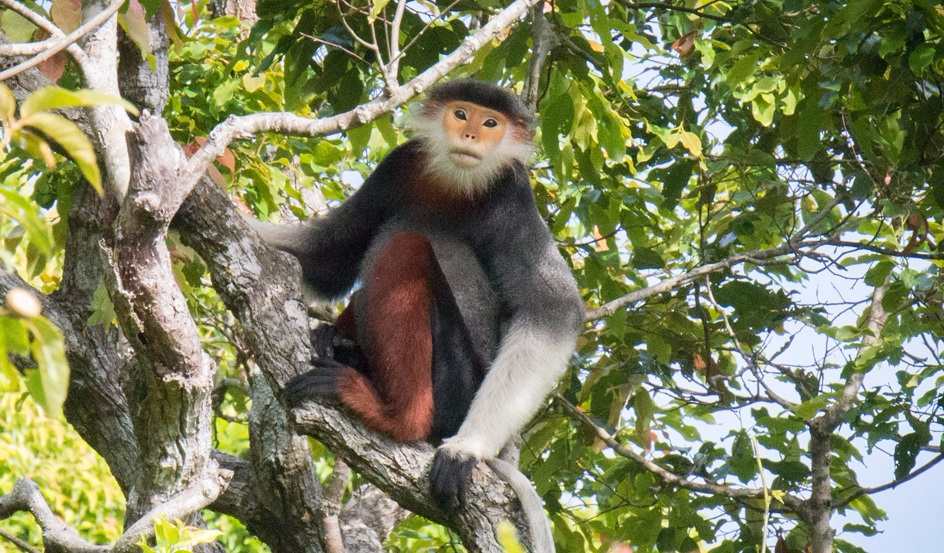
NGO Safeguards Wildlife In Lao PDR Through Research-Focused Projects
Through research-focused activities, French-registered NGO Project Anoulak seeks to ramp up conservation projects that protect the wildlife and preserve endangered species in the Nakai Nam Theun National Protected Area.
23 February 2016
Originally published by the International Union for Conservation of Nature
The Nakai Nam Theun National Protected Area is home to numerous rare, endemic and highly threatened species which have in recent years come under threat from habitat loss and unsustainable hunting. Through research-focused activities, French-registered NGO Project Anoulak seeks to ramp up conservation projects that protect the wildlife and preserve endangered species in the area.
Covering approximately 3,445,000 hectares in the heart of the Greater Northern Annamites range in central Lao PDR, the Nakai Nam Theun National Protected Area is the second largest protected area in the Lao PDR. Rare and highly threatened species including the saola, small dark muntjac and giant muntjac, can be found in the area, which has been identified as a key biodiversity area within the Critical Ecosystem and Partnership Fund (CEPF) Indo-Burma Hotspot.
Unfortunately, human activities such as illegal hunting have put unprecedented stress on wildlife and its surrounding environment. Fueled by a lucrative black market trade of animal parts, poachers sell animal parts as novelty items and ‘medicinal’ goods. If nothing is done, many more species may soon be listed as ‘Critically Endangered’ (the highest threat category) in the IUCN Red List of Threatened Species™.
To tackle this problem, Project Anoulak, a French-registered conservation NGO aims to develop and implement innovative, multidisciplinary and sustainable approaches for the long-term conservation and study of biodiversity and ecosystems in Lao PDR.
In 2015, Project Anoulak, with support from CEPF, and in collaboration with Fauna and Flora International (FFI), the Nam Theun 2 Watershed Management and Protection Authority (WMPA) and the Department of Natural Resources and the Environment (DFRM) built a field research station in the protected area to serve as a base for research and conservation activities. Through the station, which is the first of its kind in the country, Project Anoulak aims to empower the local community in the area to act as principal actors to safeguard habitats and wildlife.
The NGO is also working with IUCN Lao PDR, with the support of ARCUS foundation and other donors*, to conduct a long-term ecological study on primates - speficially the red-shanked douc (Pygathrix nemaeus) and the white-cheeked gibbon (Nomascus siki). So far, Project Anoulak has set up systematic trails, covering 12 km2 around the field station, and trained villagers to follow gibbon and douc groups and collect data on their activities, feeding ecology, habitat use and home ranges. This will help researchers understand how these threatened species interact with their environment and their ecological requirements in order to develop and/or improve current management plans for the species.
To learn more about Project Anoulak and their projects, visit their website: www.conservationlaos.com
*Parc Zoologique et Botanique de Mulhouse; Le Conservatoire/La Vallée des Singes; Minnesota Zoo; La Passerelle/Parc Animalier d’Auvergne; Apenheul; Association Française des Parcs Zoologiques; Les Amis du Muséum de Besançon/La Citadelle; Zoo de Lyon; Zoo Ljubljana; Idea Wild; Ocean Park Conservation Foundation, Hong Kong; Beauval Nature; Mohamed Ben Zayed Species Conservation Fund